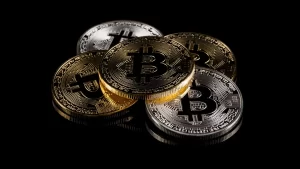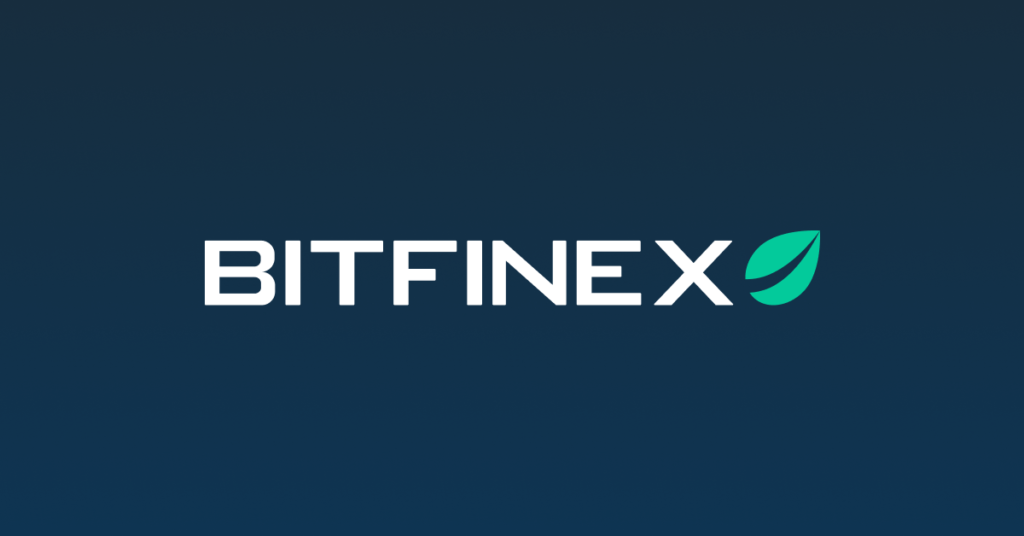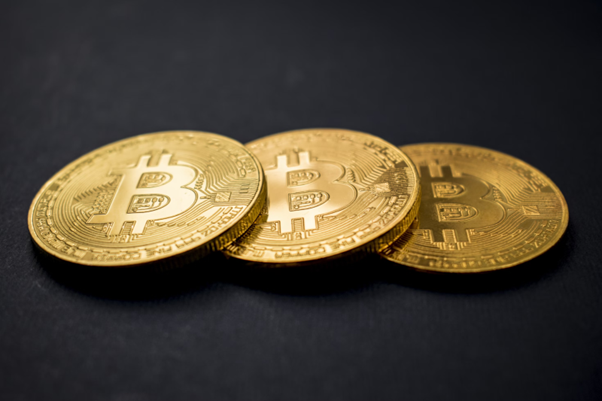As Venezuela’s economic conditions deteriorate, there has been a notable increase in crypto remittances by expatriates to support their families back home.
Amid persistent inflation and supply shortages, cryptocurrencies accounted for 9% of the $5.4 billion sent to Venezuela in remittances in 2023, which amounts to $461 million.
This trend of growing remittances has been consistent each year since 2018, apart from a brief dip in 2020, as reported by Chainalysis.
Typically, remittances are processed through services like Western Union, but their high fees and the logistical challenges related to currency availability often render these options impractical for many in developing countries.
Despite possessing the world’s largest proven oil reserves, Venezuela continues to struggle with severe inflation, economic sanctions, supply disruptions, and government corruption.
In an attempt to circumvent U.S. sanctions, the Venezuelan government launched a state-backed cryptocurrency, the Petro,
in 2018. However, this initiative failed to achieve mainstream acceptance due to widespread corruption concerns and its non-recognition as legal tender domestically.
The Petro struggled for six years before being discontinued in 2024.
The government, nonetheless, remains interested in using digital assets to bypass sanctions.
Earlier in the year, there were reports of Venezuela’s plans to use cryptocurrencies in international oil transactions.
READ MORE: Bitcoin Drops Over 2% on July 4 as Key Support Line Faces Retest Since October 2023
Subsequently, Tether, a stablecoin issuer, froze Venezuelan assets in compliance with U.S. sanctions.
Additionally, Venezuela faces severe energy shortages, which have led to new restrictions.
In May 2024, Venezuelan authorities imposed bans on cryptocurrency mining, citing its excessive demand on the national power grid—a grid that has been failing for the last decade.
This anti-mining stance is not new for the Maduro government. In 2023, the closure of mining facilities was prompted by a corruption investigation involving the country’s oil industry and Joselit Ramirez Camacho, the head of its cryptocurrency ministry.
This move reflects ongoing governmental resistance to cryptocurrency operations within the nation.
To submit a crypto press release (PR), send an email to sales@cryptointelligence.co.uk.
Tron founder Justin Sun has announced that his team is developing a gasless stablecoin solution aimed at enabling free peer-to-peer transfers for everyone.
Sun plans to launch the stablecoin solution on the Tron blockchain in the fourth quarter, with subsequent integration on Ethereum and other Ethereum Virtual Machine-compatible public chains.
“Transfers can be made without paying any gas tokens, with the fees being entirely covered by the stablecoins themselves,” Sun explained in a July 6 X post.
However, he didn’t provide details on how this mechanism would operate.
Sun believes this gas-free stablecoin could revolutionize the industry for companies aiming to offer stablecoin services:
“I believe that similar services will greatly facilitate large companies in deploying stablecoin services on the blockchain, elevating blockchain mass adoption to a new level.”
Currently, Tron leads the peer-to-peer stablecoin transfer market, consistently processing two to three times the volume of Ethereum, the second-placed blockchain, according to blockchain analytics firm Artemis in a June 27 X post.
Tron hosts over $50 billion of Tether’s $112 billion in value issued across multiple blockchains, as per DefiLlama data.
Tron’s new solution could rival PayPal’s PYUSD, which allows certain US-based users to make cross-border payments for free. Similarly, Circle’s USD Coin on Ethereum layer-2 Base via Coinbase Wallet also facilitates free transfers.
The decision by Circle and cryptocurrency exchange Binance to remove support for USDC on Tron might have spurred Tron to develop its own solution.
Additionally, Tron is exploring the possibility of building a Bitcoin layer-2 solution to support a “wrapped” version of Tether, potentially channeling billions of dollars into the Bitcoin ecosystem.
For now, Tron is utilizing existing cross-chain protocols to bridge USDT and other tokens between Bitcoin and Tron.
With these advancements, Tron aims to enhance its dominance in the stablecoin transfer market and push the boundaries of blockchain technology and adoption.
To submit a crypto press release (PR), send an email to sales@cryptointelligence.co.uk.
Shiba Inu (SHIB) has seen a remarkable recovery, marked by a significant surge in both its burn rate and market value.
Over the past day, Shiba Inu’s burn rate skyrocketed by an astounding 781%, aligning with a notable price increase.
Shiba Inu’s price rose by as much as 16% in the previous day, demonstrating a robust upward trend.
As of the latest data, SHIB continues to sustain these gains, with an 11% increase over the last 24 hours.
This price recovery has invigorated the Shiba Inu community and caught the attention of the market, highlighting the token’s potential for further growth.
According to Shibburn X’s account, over 18 million SHIB (18,092,299) were burned in the last 24 hours, representing a 781.73% surge in the daily burn rate.
The price of SHIB is currently trading at $0.0000164, according to CoinMarketCap data. The broader cryptocurrency market’s sentiment has influenced Shiba Inu’s recovery.
READ MORE: Analyst Urges Calm Amid Government Bitcoin Sell-Offs, Highlights Minimal Market Impact
As investor sentiment improves and market conditions stabilize, crypto assets like SHIB stand to benefit from increased interest and trading activity.
Additionally, the recent positive sentiment within the Shiba Inu community might have contributed to the surge in both the burn rate and price.
Looking ahead, the market will be closely watching Shiba Inu’s progress in the coming weeks, eager to see if the token can maintain its upward trajectory.
Broader market trends and investor sentiment will play a significant role in SHIB’s future performance.
Currently, Shiba Inu bulls are challenging a key price level where a substantial amount of SHIB is held by several addresses.
According to IntoTheBlock data, 422.29 trillion SHIB are held by 23,330 addresses at an average price of $0.000017.
If bulls succeed in surmounting this vital level, the SHIB price might approach $0.00002.
In this scenario, a sustained breach above the daily moving averages of 50 and 200 at $0.0000193 and $0.00002125 might indicate a bullish comeback.
To submit a crypto press release (PR), send an email to sales@cryptointelligence.co.uk.
Dogecoin (DOGE) experienced a significant sell-off on Thursday as a major holder transferred 400 million DOGE tokens to Binance.
Whale Alert, a platform monitoring large cryptocurrency transactions, reported that an anonymous whale moved approximately $41.08 million worth of DOGE from an undisclosed wallet to Binance, coinciding with the memecoin’s drop below the critical support level of $0.1.
Surprisingly, a few hours later, the whale withdrew 50.4 million DOGE tokens, valued at around $4.8 million.
This sudden reversal suggests a possible change in strategy or sentiment by the investor, opting perhaps to retain a portion of their holdings amidst the volatile market conditions.
At press time, the whale retained 379.8 million DOGE, valued at approximately $37.21 million, according to Blockchair.
Analysis of the transaction history suggests this whale had accumulated around 1 billion DOGE from Binance earlier in the year, indicating a strategic move amidst market fluctuations.
The whale’s move occurred amid broader turmoil in the cryptocurrency market.
DOGE experienced a flash crash to as low as $0.93 following fears of a potential sell-off of around $9 billion worth of Bitcoin by creditors of the infamous Mt. Gox exchange.
Further worsening the bearish sentiment, the German government’s ongoing sale of approximately 50,000 Bitcoins added to the market’s fear, uncertainty, and doubt (FUD).
Over the past 24 hours, approximately $640 million worth of cryptocurrency assets have been liquidated, according to Coinglass.
Bitcoin led the liquidation figures, followed closely by Ethereum and then Solana. Dogecoin also faced substantial liquidations, sitting in the fifth position with around $11 million worth of positions closing in the red.
Despite these challenges, market analysts view the recent events as indicative of waning confidence in Dogecoin’s short-term profitability.
Some analysts, like Cryptolicca, suggest that DOGE’s price may find support within its current trading range of $0.17 to $0.95 “level 2.”
Notably, according to Intotheblock, Dogecoin has established a significant demand barrier at $0.099, where over 1.14 million addresses collectively hold 11.36 billion DOGE.
Should the price drop further, strong support is anticipated around $0.081, backed by holdings from 1.16 million addresses totaling 23.7 billion DOGE.
Additionally, there has been a notable uptick in DOGE accumulation. Data from IntoTheBlock reveals a steady increase in addresses with positive balances, marking a positive trend for DOGE.
As of June 17, there were approximately 6.48 million addresses with nonzero balances, a significant rise from 4.77 million on the same day in 2023.
This surge in network activity and accumulation of assets bodes well for Dogecoin’s potential upward price movement in the future.
At press time, DOGE was trading at $0.0988, reflecting a 10.78% drop over the past 24 hours.
To submit a crypto press release (PR), send an email to sales@cryptointelligence.co.uk.
Over the past few days, Shiba Inu (SHIB) has experienced significant price swings, reflecting the overall cryptocurrency market’s ebb and flow.
However, in a notable turn of events, SHIB has managed to recover by 6.5% within the last 24 hours, bringing its current trading price to approximately $0.00001637.
This resurgence is especially significant as SHIB had faced a considerable decline, aligning with trends seen in Bitcoin and other major cryptocurrencies.
A closer analysis of SHIB reveals that the cryptocurrency’s burn rate has markedly increased, soaring almost 800% in just 24 hours, Investing Insider reported.
This equates to approximately 18 million SHIB tokens being permanently removed from circulation.
While the immediate financial value of these burned tokens may appear minor, the strategic reduction in supply is designed to foster long-term price stability and growth.
Another critical metric indicating SHIB’s positive momentum is the substantial increase in whale activity.
READ MORE: House Set to Vote on Overturning Biden’s Veto of Crypto Regulation Rule Next Week
According to data from analytics firm IntoTheBlock, there has been a 180% rise in large transaction volumes involving SHIB over the past day.
This uptick suggests that significant investors are taking keen interest, potentially positioning themselves for anticipated future gains.
Despite a generally bearish outlook from the analytics firm, the recent surge in large transactions could signal a shift in market sentiment.
As the SHIB market continues to navigate through periods of volatility, recent developments provide a cautiously optimistic outlook.
The commendable recovery in price, combined with increasing burn rates and heightened whale activity, positions Shiba Inu as a point of focus within the cryptocurrency community.
While the market remains unpredictable, these indicators suggest potential for sustained growth, contingent on maintaining the current momentum.
Investors and enthusiasts should stay informed of ongoing trends and metrics to make strategic decisions in this dynamic market environment.
To submit a crypto press release (PR), send an email to sales@cryptointelligence.co.uk.
Bitfinex Securities, a digital asset platform, has announced that it will refund investors for its unsuccessful Hilton hotel venture at El Salvador’s international airport.
The project, representing El Salvador’s first public offering of digital debt assets, fell short of its initial funding target, garnering only $342,000 against a required $500,000 to proceed.
This amount constituted just 5% of the ambitious $6.25 million total they aimed to raise.
A Bitfinex spokesperson told Cointelegraph, “As per the Relevant Information Document, Bitfinex will be refunding all investors.”
Although the spokesperson indicated that the issuer, Inversiones Laguardia S.A. de C.V., is expected to restructure the offer, no confirmation or detailed plan has yet been provided by Inversiones Laguardia.
Following this setback, Bitfinex has withdrawn the public offering from its platform.
The funds raised were intended to build a Hampton by Hilton hotel, designed to span 4,500 square meters over five levels.
Planned amenities included 80 rooms, a restaurant, working area, swimming pool, gym, and a garden.
READ MORE: $1.19 Billion Lost to Onchain Security Breaches in First Half of 2024
To participate, investors were required to purchase the “HILSV” token with a minimum investment of $1,000 on the Bitcoin layer 2 Liquid Network, promising a 10% coupon over five years.
El Salvador, which has gained attention for its Bitcoin adoption and investment strategy, took a significant step in April 2023 by granting Bitfinex a digital asset service provider license.
This move was part of the country’s broader strategy to tokenize real-world assets. Commenting on the venture, Bitcoin analyst Stacy Herbert remarked that Bitfinex’s initiative marked a “new era of capital markets” on Bitcoin in El Salvador, offering locals new avenues to participate in financial markets.
Additionally, El Salvador continues to push forward with its innovative financial strategies, including plans to establish investment banks tailored for Bitcoin users.
These banks are expected to provide financial services with fewer restrictions than traditional banking institutions, broadening access and opportunities for local and international investors alike.
To submit a crypto press release (PR), send an email to sales@cryptointelligence.co.uk.
Next week, the U.S. House of Representatives might overturn President Joe Biden‘s veto of Staff Accounting Bulletin 121 (SAB 121), a rule requiring entities that report to the SEC and hold cryptocurrencies to list those assets on their balance sheets.
This information comes from the House Majority Leader Steve Scalise’s weekly schedule, which includes SAB 121 on the “legislation that may be considered” list.
The House must vote to either overturn or uphold presidential vetoes due to constitutional obligations, with the next votes possibly occurring on Tuesday, July 9, or Wednesday, July 10.
Earlier, a resolution to nullify the SEC’s rule saw bipartisan approval in both the House (228–182) and Senate (60–38), only to be vetoed by Biden in late May.
Critics of SAB 121 argue that the rule would restrict American banks from custodianing cryptocurrency exchange-traded products on a large scale, leading to a concentration risk that could benefit non-bank entities.
READ MORE: $1.19 Billion Lost to Onchain Security Breaches in First Half of 2024
Overturning the veto will require a two-thirds majority in both the House and Senate, a significant challenge given that only 55.6% of House members and 61.2% of Senators supported the resolution in May.
Alexander Grieve, a government affairs expert at the cryptocurrency investment firm Paradigm, described the situation as a “steep hill to climb but not impossible” due to the bipartisan nature of the previous vote.
Additionally, in May, the House passed the Financial Innovation and Technology for the 21st Century Act, which aims to clarify the regulatory approach of U.S. commodities and securities bodies towards cryptocurrencies.
The vote tally was 279–136.
In the political arena, President Biden and Republican candidate Donald Trump are intensifying their campaign activities as the 2024 presidential election in November approaches.
Both have recently turned their attention to cryptocurrency-related issues, which Kerri Langlais, chief security officer at Bitcoin mining company TeraWulf, views as beneficial for the industry.
Langlais told Cointelegraph that both candidates have adjusted their original stances on cryptocurrencies favorably over the past year, emphasizing the importance of continuing educational and political efforts in this area.
To submit a crypto press release (PR), send an email to sales@cryptointelligence.co.uk.
In a recent commentary on X, dated July 5, Ki Young Ju, the CEO of onchain analytics firm CryptoQuant, addressed the concerns surrounding government sell-offs of Bitcoin (BTC).
He emphasized the relatively minor impact of these sell-offs on the overall market, advising traders not to react impulsively to such events.
Ki stated, “Don’t let government selling FUD ruin your trades.”
He highlighted that the amount of Bitcoin being offloaded by governments globally is insignificant when compared to the massive inflows the cryptocurrency market has experienced.
Since the onset of the latest bull market, the crypto space has seen nearly $250 billion in inflows, whereas the total potential government sales of BTC amount to less than $10 billion.
Ki further explained, “Govt Bitcoin selling is overestimated,” adding, “$224B has flowed into this market since 2023. Government-seized BTC contributes about $9B to the realized cap.”
This perspective offers a calm contrast to the recent volatile price movements in BTC, which have been influenced by government actions and the ongoing transfers from accounts associated with the defunct exchange Mt. Gox.
READ MORE: Bitcoin Drops Over 2% on July 4 as Key Support Line Faces Retest Since October 2023
The primary sellers in focus are Germany and the United States, with Germany holding approximately 41,200 BTC confiscated from criminal activities, as reported by Arkham, a crypto intelligence agency.
Despite the prevailing nervous market sentiment, as indicated by the Crypto Fear and Greed Index nearing “extreme fear,” Ki believes the panic induced by government actions alone is disproportionate.
He reasoned, “It’s only 4% of the total cumulative realized value since 2023,” reinforcing his earlier statement, “Don’t let govt selling FUD ruin your trades.”
As the market continues to monitor critical support levels, the narrative remains cautious but observant of potential rebounds.
Current evaluations place the supertrend floor at $52,000, with potential scenarios predicting a dip to $45,000, aligning the current downturn with historical trends.
Moreover, established bull market supports such as the 200-day moving average and Bitcoin’s short-term holder cost basis are currently pegged at $58,550 and $64,175, respectively.
On a related note, Bitcoin hit a four-month low of $53,500 on July 5 but saw a modest recovery, trading approximately $3,000 higher the following day, according to data from Cointelegraph Markets Pro and TradingView.
To submit a crypto press release (PR), send an email to sales@cryptointelligence.co.uk.
Bitcoin recently saw a rebound, rising 6.40% on July 6 to a value of $56,975 after experiencing a five-month low the previous day.
This resurgence suggests traders are starting to mitigate the bearish impacts triggered by Mt. Gox’s massive $8 billion BTC reimbursement and recent BTC selloffs conducted by the U.S. and German governments.
Efforts to stabilize market perceptions have been ongoing among leading cryptocurrency analysts.
They seek to diminish concerns surrounding the substantial sell-offs and emphasize Bitcoin’s robust long-term prospects.
Ki Young Ju, the CEO of CryptoQuant, highlighted that the $8 billion in government-controlled BTC represents a small fraction—just 4%—of the $225 billion infused into the Bitcoin market since 2023.
This perspective underlines the market’s capability to handle such disruptions without destabilizing effects.
Furthermore, liquidity concerns related to possible future actions by the German government, which holds about 42,000 BTC, are also being downplayed.
Market analysts reassure that the Bitcoin market is resilient enough to absorb potential impacts if these holdings were to be sold off.
Trader Tardigrade, an independent analyst, drew comparisons between the current market scenario and past significant market events, often referred to as ‘black swan’ events.
He said, “In 2016, 2020, and 2024, $BTC moved in the same pattern.
Besides 2020, $BTC Fakeout was seen below the trendline. After reclaiming above trendline, a Bull Run follows,” suggesting that the current situation could similarly lead to a robust market recovery and an ensuing bullish phase.
READ MORE: Bitcoin Drops Below $58,000 for First Time in Two Months Amid Major Liquidations
Rekt Capital, another analyst, noted that the current sell-offs align with the typical cycles observed post-Bitcoin halving events, which historically lead to a temporary price decline as the market adjusts to reduced supply.
However, this phase is often followed by a price surge driven by decreased supply coupled with heightened demand.
Bitcoin’s rebound was also partly influenced by positive movements in the U.S. stock market, with the S&P 500 hitting a record high in a post-holiday trading session that noted a thin volume.
This spike in equities came despite data indicating a slowdown in U.S. hiring and an increase in the jobless rate, prompting predictions of a potential interest rate cut in September, which is generally favorable for Bitcoin and other higher-risk assets.
The effects of these broader economic indicators were mirrored in the cryptocurrency markets.
For example, on July 5, following the release of U.S. jobs data, Bitcoin ETFs saw an influx of $143.1 million after experiencing outflows in the preceding days.
Additionally, Bitcoin’s futures market showed increased funding rates, although open interest dropped, indicating a phase where less confident investors exit while others increase their stakes, anticipating a price rise.
To submit a crypto press release (PR), send an email to sales@cryptointelligence.co.uk.
CryptoQuant, a market intelligence firm, has observed indicators that Bitcoin miner capitulation metrics are nearing levels similar to those seen after the FTX crash in late 2022, suggesting a potential bottom for Bitcoin prices.
Miner capitulation occurs when miners scale back operations or sell part of their mined Bitcoin and reserves either to sustain themselves or to “earn yield or hedge their Bitcoin exposure.”
In recent times, as Bitcoin’s price declined by 13% from $68,791 to $59,603 over the last month, signs of capitulation have become more evident.
One significant indicator of this trend is the decrease in Bitcoin’s hashrate, which is the total computational power used to secure the network.
This hashrate has fallen by 7.7% to 576 EH/s, reaching a four-month low after previously hitting a record high on April 27.
This drop in hashrate mirrors a similar reduction seen in late 2022, which historically correlated with the market bottoming out at $15,500 before a subsequent 300% increase in Bitcoin’s price over the following 15 months.
CryptoQuant’s analysis also points out that since the last Bitcoin halving, miners have been substantially undercompensated, as shown by the miner profit/loss sustainability indicator.
This has resulted in a 63% reduction in miners’ daily revenues from $79 million on March 6 to $29 million currently, with revenues from transaction fees dropping to just 3.2% of the total, marking the lowest since April 8.
READ MORE: Bitcoin Drops Below $58,000 for First Time in Two Months Amid Major Liquidations
Moreover, the decline in revenue has compelled miners to dip into their reserves to generate yield, leading to a notable increase in daily miner outflows, the highest since May 21.
This trend suggests that miners might be selling off their Bitcoin reserves.
Despite significant outflows in May, they remained below extreme levels (twice the 1-year average), indicating a measured approach to selling.
The overall impact of these sales, combined with those from Bitcoin whales and national governments, has pressured Bitcoin’s price to a four-month low of $53,499 on July 5.
Furthermore, the downturn has affected the ‘hash price,’ a metric of mining profitability per unit of computational power, which now stands at $0.049 per EH/s, barely above the record low of $0.045 seen on May 1.
Reflecting on the broader implications, a report from Cantor Fitzgerald highlighted that major mining firms could face significant challenges if Bitcoin prices were to drop to $40,000, underscoring the precarious situation of the mining industry.
To submit a crypto press release (PR), send an email to sales@cryptointelligence.co.uk.











